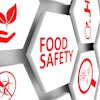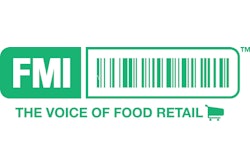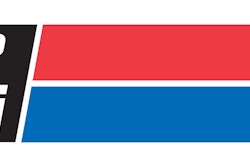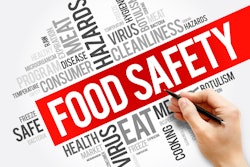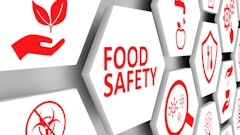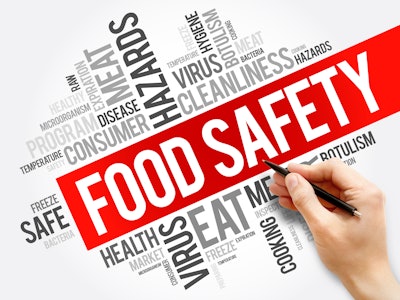
Starting Jan. 6, 2025, FSMA 204 will apply to all foods on the FDA's Food Traceability List (FTL). What does this mean for the cold food chain industry? For those companies still not in compliance, what are the next steps? And, what happens to those companies not in compliance?
FSMA 204 requires entities involved in the cold food chain that manufacture, process, pack, or hold foods on the U.S. Food and Drug Administration’s FTL maintain records that include key data elements (KDEs) for designated critical tracking events (CTEs) to ensure rapid traceability of foods. The compliance date is Jan. 20, 2026.
The FTL will play a crucial role in supporting the swift and efficient removal of contaminated food from the marketplace and ultimately reduce foodborne illnesses, note Yolanda Serra Martinez, health communication specialist with the FDA Human Foods Program Division of External Communications & Consumer Education, Office of Communications, Education, and Engagement.
Entities will be required to provide this information to the FDA within 24 hours or another reasonable timeframe agreed upon with the FDA, she says.
“In our commitment to enhancing compliance and understanding within the industry, we continue to respond to questions submitted by industry to the FSMA Technical Assistance Network, publish communications materials on FDA.gov, including translations of those materials, and prepare additional tools and resources to help industry learn about the rule,” says Martinez.
“Our team has had over 185 meetings across industry sectors and answered over 400 questions through our technical assistance network. We also worked with the Reagan-Udall Foundation to meet with industry through a series of roundtables and the public meeting they hosted a couple of weeks ago, for which the comment period recently closed, allowed us to directly hear from the industry about their compliance efforts, the obstacles they encounter, and the potential solutions they propose,” she adds.
The ongoing dialogue with the industry is crucial as it helps the FDA support a successful implementation of the rule, and thus the overall goal of maintaining a safe food supply chain, Martinez says.
“These interactions are aimed at grasping the challenges faced by entities as they work towards compliance and identifying feasible solutions,” she adds.
“We encourage companies to review the rule and the resources available on FDA’s website to see what they need to do,” she adds. “We also encourage companies to talk with their supply chain partners to understand the recordkeeping practices in their supply chain and determine how best to share required KDEs.”
When to expect routine inspections
Martinez indicated while the compliance date is January 2026, the FDA has indicated routine inspections under the Food Traceability Rule will not begin until 2027 to give covered entities additional time to work together and ensure that traceability information is being maintained and shared within supply chains per the requirements of the rule.
“We also want to support widespread compliance by making sure that covered entities have the information needed for the successful implementation of this rule,” she adds. “While we are not initiating routine inspections until 2027, we may do inspections for compliance with the Food Traceability Rule on a for-cause basis, such as during an outbreak investigation, once the compliance date of Jan. 20, 2026, is reached.”
Earlier this year, Association of Food and Drug Officials (AFDO), FMI – The Food Industry Association (FMI), GS1 US, Institute of Food Technologists (IFT), International Foodservice Distributors Association (IFDA), International Foodservice Manufacturers Association (IFMA), International Fresh Produce Association (IFPA) and National Association of State Departments of Agriculture (NASDA) joined forces to form the Food Industry FSMA 204 Collaboration to enhance industry-wide awareness of the FDA’s Food Traceability Rule, which implements Section 204(d) of the U.S. FDA Food Safety Modernization Act (FSMA).
This group seeks to enhance food safety, ensure efficient traceability and protect public health across the entire supply chain.
The collaboration will provide a forum where business and government officials can come together to educate industry and potentially help ease the burden of compliance.
“Everybody aspires to have the safest food supply chain as much as possible,” says Doug Baker, FMI VP of industry relations. “This is just one more activity the FDA put together as a piece of the Food Safety Modernization Act. For the grocery industry, the food traceability list plays a key central role of knowing what it is that the FDA wants additional traceability activities placed against in order to be able to respond more quickly to a food safety outbreak."
“There’s still some questions that need to be answered by the FDA in order for our industry to be able to more effectively respond and execute the traceability rules,” says Baker, adding FMI is working with the FDA regarding nuances and the need for additional explanations.
Operationally, it is important to understand what it takes to execute the rule.
“This is an end-to-end value chain activity. That information has to be handed off from one key tracking event to another key tracking event until it makes its way to the retailer,” Baker adds. “What are those KDEs, the critical data elements required, and how do I portray those on a case so they can be tracked, recorded and moved through the supply chain.”
FMI also is working with legislators to ensure any potential modifications to the rule are taken. For instance, there are questions as to how FSMA 204 affects the cold supply chain.
“The USDA has regulatory oversight over beef products,” Baker says. “If I have a pizza and I have spinach on it, but I also have pepperoni on it, is that an FDA or USDA item? It is important to understand the food traceability list, the items on the list, and understand how they impact you as an organization.”
FMI has an FSMA traceability portal on its website and a traceability implementation guide for members “so you’re not having to read the rule from end to end,” Baker says.
An FMI infographic walks through the process of taking a tomato from the farm to the store and delineates the potential critical tracking events and key data elements in that process. According to the infographic, the U.S. Food and Drug Administration issued a highly complex Food Traceability Rule 11 years after the passage of the Food Safety Modernization Act. The law was originally designed by Congress to quickly identify and mitigate risk associated with a small number of ‘high risk’ roods more prone to contamination, such as sprouts.
“However, when the rule was published, the scope expanded dramatically to include a lengthy list of foods impacting well above 10,000 products. The sheer complexity of FDA’s mandates puts an unnecessary paperwork burden on an already stressed food supply chain without any focus on prevention, which should be the core of FDA’s mission,” Baker says. “We’ve been encouraging the FDA to consider a different timeframe and type of information that needs to be needs to be gathered.”
Baker encourages people trying to execute the rule to have conversations with third-party solution providers if they are in the need of additional assistance.
“There’s a significant amount of upgrades from a technology standpoint that need to happen,” he says. “In some instances, the timeline to get those things done is not advantageous. There is a list of technology companies ready and willing to help.”
Cold chain solutions to enhance traceability
For its part, PLM Fleet developed PLM TrustLink, a turnkey, cloud Internet of Things (IoT) management platform for automated touchless supply chain ecosystems that provides real-time, condition-monitored, track-and-trace capabilities and analytics.
It digitizes food in the supply chain and allows users to follow that food all the way through the supply chain, says Don Durm, VP of strategic customer solutions for PLM Fleet and chairman of the Global Cold Chain Alliance (GCCA), adding the platform allows for the use of any digital marker: a QR code, a barcode, RFID, etc.
“One of the challenges we have in supply chain is we all have different enterprise resource planning and warehouse management systems that do not talk to one another,” Durm says. “Our software is a translator.”
GCCA also published “Cold Chain – Transportation Best Practices,” a guide designed to assist shippers in understanding and preparing qualified – and attainable – food safety plans and transportation requirements offering carriers, loaders, and receivers a clearer understanding of expected practices. The guide was originally written to meet compliance for the FSMA rules coming out, says Durm, co-author of the report.
“A couple of years ago, I saw what was happening with the FDA and where they were going with these Food Safety Modernization Act rules. It should have been called the Food Documentation Act. There was not anything modern about it, but now the 204 modernizes the supply chain,” he adds.
Durm says FSMA will fundamentally change how the supply chain will work.
“The data requirements will require that companies will digitize their food in the supply chain. That will be a basic requirement for them to be able to do that,” he says. “All entities on the supply chain will have to keep this information on a sortable spreadsheet available for two years and be able to produce that within 24 hours. Here is the extended change: that requirement goes all the way up to the retail establishment.”
That being said, restaurants, grocery stores, and convenience stores will now have to be a repository for information on the food traceability list, Durm says.
“Think of a mom and pop restaurant: they’ve got a hamburger they're serving, so they're going to have to keep a record of the lettuce, cheese, and tomato that went on that hamburger for two years inside that store,” says Durm.
This results in some confusion within the rule, Durm says.
“I got a call from a major pizza company and they asked me if fresh-cut mushrooms are on the list. If you Google mushrooms, it says it is not a vegetable,” he adds. “You would say it is not on the list because it needs seeds. It does not need light to grow. Then you read the 204 rule and they make reference to another rule outside of the 204 rule that these are the exemptions for the 204 rule. You go to that other one not in the rule itself, but it is the food code. When you read that, it talks about potatoes, beans, legumes – things that are not traditionally consumed raw. Those are off the list. Mushrooms are not on that list.”
But, the USDA considers a mushroom a vegetable because of its nutritional value, Durm says.
“A couple of years ago, USDA and FDA signed a reciprocity agreement because they regulate the same foods a lot of times through the supply chain depending on where it's at,” he says. “According to that conclusion, I would say fresh-cut mushrooms were probably on the list because USDA considers it a vegetable.”
For the supply chain, the enhanced record-keeping of only particular foods is the change, Durm notes.
“Key data elements and critical tracking events are also what's kept on a sortable spreadsheet,” he says. “We're really talking about digitizing the supply chain on these foods. We have a good supply chain. But this will definitely add what people are perceiving as expense.”
Food recalls still part of the challenge
Food recalls are still part of the challenge, Durm notes. As of mid-November, there had been 740 recalls to date in 2024 compared to 300 in 2023 and 31 in 2020.
While people assume FSMA is a rule that is coming up, it was passed in 2022, adding “they were just not enforcing it for the three years for people to get up to speed with this,” Durm says.
The time to do so is now rather than waiting until December 2025, as staff will need to be trained on the FSMA 204 requirements, Durm says.
“You are required by law to build a traceability plan and then you've got to document your procedures, and do any audits on information you're giving out and which you're taking in,” he adds.
While the rule is about 20 pages long, there are significantly more pages addressing various comments and the FDA response, Durm says.
“There are 230 ‘howevers’ throughout that document,” he adds. “The ‘howevers’ are the nuances of the rule. It’s like ‘we do this, however you’ll have to do this’.”
Part of the industry’s challenge is “we don't have a common language,” he adds. “I ride on trailers and follow cases. I'll see four or five barcodes on a case. Not all barcodes are equal. You have to have something that's universal and have common language. Software can ingest all those different languages and make it one for you, then pass on that information to the next supply chain partner.”
Durm says the value of FSMA 204 is that once a company gets the new approach down, supply chain problems will be more easily located.
The average recall is about $10 million. Recalls bring on branding challenges. A Gallup poll study indicated 53% of respondents would not buy a previously recalled product. This warning to the industry is that FSMA fundamentally changed the FDA.
“Food now becomes not just a civil penalty a company can prepare for, but a criminal offense that could be happening,” says Durm. “I get up on a trailer, ride with the drivers, and help companies figure out where their gaps are, their losses and how to build a better refrigerated trailer in the supply chain. I uniquely understood when FDA came up with this Food Safety Modernization Act that it fundamentally changed FDA from a regulatory reactionary body to a law enforcement department. Understanding that you could potentially go to jail does put a new light on our supply chain.”
Durm says there are instances where the wrong product is put on the wrong trailer.
“They load it by stop,” he notes. “If you mix up that load, from now on, everybody's got to keep pulling everything out of the trailer to find their stuff. There is no load map that's given to them to reload it. So we have all these different challenges, these gaps in supply chain that have dates on it, have operational efficiencies that are tied to it.”
“If we get a good handle on our supply chain to know exactly where your product is, we can save so much time and money on the overall supply chain,” he adds.

